3 Phase Pad Mounted Transformer Installation: Best Practices for Utility Companies?
Are you a utility company struggling with transformer installations? Improper installation can lead to costly failures and safety hazards. But there’s a solution.
Best practices for 3 phase pad mounted transformer installation include proper site preparation, careful handling, correct electrical connections, and thorough testing. Following these guidelines ensures safe, efficient, and reliable power distribution for utility companies.
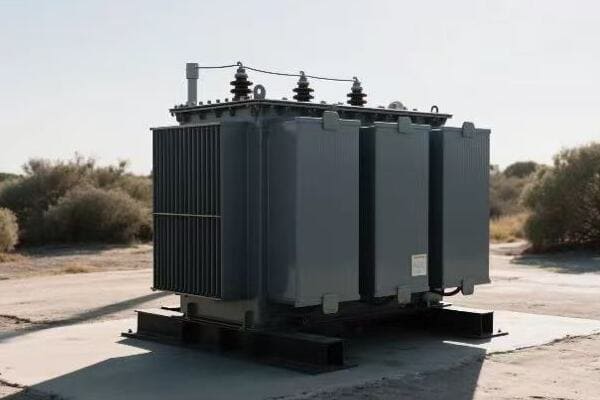
In this article, I’ll share my experience and insights on installing 3 phase pad mounted transformers. From site selection to final power-up, we’ll cover everything you need to know to ensure a successful installation.
From Delivery to Power-Up: A Step-by-Step Guide to Installing 3 Phase Pad Mounted Transformers?
Have you ever wondered what goes into installing those big green boxes in your neighborhood? It’s not as simple as dropping them off and plugging them in.
Installing 3 phase pad mounted transformers involves a series of critical steps: site preparation, transformer placement, electrical connections, oil filling, and final testing. Each step requires precision and expertise to ensure safe and efficient operation.
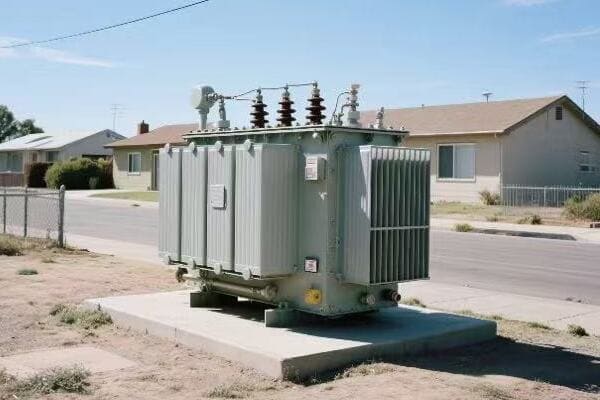
Let’s break down the installation process:
Site Preparation: Laying the Groundwork
Proper site preparation is crucial for the longevity and performance of your transformer.
Key Steps:
- Soil testing and compaction
- Concrete pad construction
- Conduit installation for cables
- Grounding system setup
Transformer Placement: Heavy Lifting with Precision
Getting the transformer in place requires careful planning and execution.
Placement Considerations:
- Use of appropriate lifting equipment
- Proper alignment on the pad
- Clearance checks for accessibility
- Anchoring the transformer securely
Electrical Connections: Wiring for Power
This is where the transformer gets integrated into the electrical grid.
Connection Process:
- High voltage cable terminations
- Low voltage cable connections
- Neutral and ground wire attachments
- Installation of surge arresters
Oil Filling: The Lifeblood of Your Transformer
Proper oil filling is essential for insulation and cooling.
Oil Filling Steps:
- Vacuum processing to remove moisture
- Careful oil filling to avoid air pockets
- Oil level checks and top-ups
- Oil sample testing for quality assurance
Final Testing: Ensuring Everything Works
Thorough testing is crucial before energizing the transformer.
Test Procedures:
- Insulation resistance tests
- Turn ratio tests
- Winding resistance measurements
- Functional tests of accessories
| Installation Phase | Critical Factors | Common Pitfalls |
|---|---|---|
| Site Preparation | Soil stability, drainage | Inadequate compaction, poor drainage |
| Transformer Placement | Proper lifting, alignment | Damage during transport, misalignment |
| Electrical Connections | Correct terminations, grounding | Loose connections, improper grounding |
| Oil Filling | Moisture removal, proper filling | Air pockets, contamination |
| Final Testing | Comprehensive checks | Skipping tests, misinterpreting results |
I remember a particularly challenging installation in a densely populated urban area. Space was tight, and we had to coordinate with multiple city departments to manage traffic and ensure safety. The site preparation was tricky due to underground utilities, requiring careful excavation and pad design.
During the transformer placement, we faced an unexpected issue. The crane we initially brought wasn’t tall enough to clear some nearby power lines. We had to quickly source a larger crane, which delayed our schedule but was necessary for safe installation.
The electrical connections were straightforward, but we took extra time to double-check every termination. In my experience, this is where rushed jobs often lead to problems down the line. We used infrared cameras to check for any hot spots after making the connections.
Oil filling was a delicate process. We used a vacuum pump to remove all air and moisture from the transformer before filling it with oil. I always insist on testing the oil before and after filling to ensure its quality. Once, we caught a batch of contaminated oil before it went into the transformer, potentially saving us from a major failure.
The final testing phase is where I’ve seen many installers try to cut corners. But I always insist on running a full suite of tests. On this installation, our thorough testing caught a minor issue with one of the bushing connections. It was a quick fix on-site, but if left undetected, it could have led to a failure soon after commissioning.
This step-by-step approach, while time-consuming, ensures a safe and reliable installation. It’s not just about getting the transformer in place; it’s about setting it up for years of trouble-free operation. In my years of experience, I’ve found that the extra time spent on a careful installation pays off many times over in reduced maintenance and increased reliability.
Safety First: Essential Precautions for 3 Phase Transformer Installation in Urban Areas?
Are you worried about the risks of installing large transformers in busy city areas? You’re right to be concerned – safety should always be the top priority.
Essential safety precautions for 3 phase transformer installation in urban areas include proper site security, traffic management, electrical safety protocols, and public awareness measures. These steps protect workers, the public, and property during the installation process.
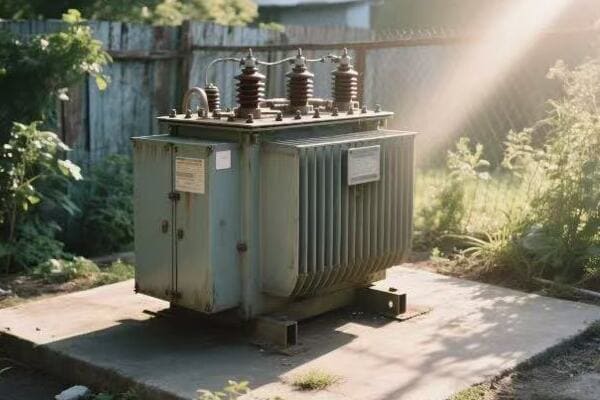
Let’s explore the key safety measures:
Site Security: Keeping the Curious at Bay
In urban areas, your installation site can quickly become a point of interest for passersby.
Security Measures:
- Sturdy fencing around the work area
- Warning signs and barricades
- Security personnel for high-traffic areas
- Nighttime lighting and surveillance
Traffic Management: Keeping the City Moving
Urban installations often impact traffic flow, requiring careful planning.
Traffic Considerations:
- Coordination with local traffic authorities
- Clear detour signage
- Flaggers or temporary traffic lights
- Scheduling work during off-peak hours
Electrical Safety: Protecting Workers and the Public
Working with high voltage equipment demands strict safety protocols.
Electrical Safety Steps:
- Proper lockout/tagout procedures
- Use of personal protective equipment (PPE)
- Grounding and bonding checks
- Presence of a safety officer on-site
Public Awareness: Informing the Community
Keeping the public informed can prevent accidents and reduce complaints.
Awareness Strategies:
- Advance notifications to local residents and businesses
- Information boards explaining the project
- Social media updates on progress and impacts
- Community liaison officer for addressing concerns
| Safety Aspect | Urban Challenges | Mitigation Strategies |
|---|---|---|
| Site Security | Curious onlookers, potential vandalism | 24/7 security, robust barriers |
| Traffic Management | Congestion, limited work space | Night work, temporary road closures |
| Electrical Safety | Proximity to populated areas | Strict protocols, additional insulation |
| Public Awareness | Complaints, interference | Proactive communication, community engagement |
I once managed a transformer installation in the heart of a bustling downtown area. The challenges were numerous, but our focus on safety made the project a success.
Our first step was to secure the site. We installed high visibility fencing with privacy screens to deter onlookers. Despite this, we still had people trying to peek in, so we stationed a security guard 24/7. This not only ensured safety but also gave locals a point of contact for questions.
Traffic management was a major hurdle. We were working on a busy street with limited alternative routes. After consulting with city officials, we decided to do most of the work at night. We set up bright lighting and used reflective gear to ensure worker visibility. During the day, we maintained a smaller footprint to allow traffic flow.
Electrical safety was my top concern. We implemented a strict buddy system – no one worked alone, especially when dealing with live components. We also brought in an independent safety officer to oversee our procedures. Their fresh perspective helped us identify and address potential risks we might have overlooked.
Public awareness was crucial in gaining community support. We held a town hall meeting before starting work to explain the project and address concerns. We also set up a project website with daily updates and a hotline for emergencies. This proactive approach significantly reduced complaints and helped us maintain a positive relationship with the community.
One incident stands out in my memory. A curious teenager managed to slip past our perimeter one night. Thanks to our vigilant security and clear hazard markings, he was spotted and safely escorted out before reaching any dangerous areas. This event led us to review and enhance our site security further.
Throughout the project, we maintained a "safety first" mindset. We started each shift with a safety briefing, discussing the day’s tasks and potential hazards. We encouraged all workers to speak up about any safety concerns, creating a culture where safety was everyone’s responsibility.
By prioritizing safety in every aspect of our urban transformer installation, we not only protected our workers and the public but also enhanced our reputation as a responsible utility company. The project was completed without any significant incidents, setting a new standard for urban installations in our company.
Location Matters: Choosing the Perfect Spot for Your 3 Phase Pad Mounted Transformer?
Ever wondered why those green transformer boxes are placed where they are? It’s not random – location can make or break your transformer’s performance and lifespan.
Choosing the perfect spot for a 3 phase pad mounted transformer involves considering factors like accessibility, flood risk, proximity to buildings, and future development plans. The right location ensures optimal performance, easy maintenance, and minimal environmental impact.
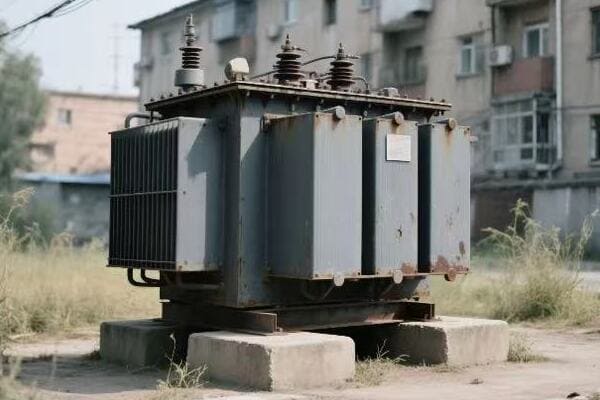
Let’s explore the key factors in selecting the ideal location:
Accessibility: Ensuring Easy Maintenance
A transformer that’s hard to reach is hard to maintain.
Accessibility Considerations:
- Clear path for maintenance vehicles
- Adequate working space around the transformer
- Proximity to roads or service lanes
- Clearance for equipment replacement
Environmental Factors: Protecting Your Investment
The environment can significantly impact your transformer’s performance and lifespan.
Environmental Considerations:
- Flood risk assessment
- Soil stability and drainage
- Protection from extreme weather
- Noise impact on surrounding areas
Safety and Regulations: Staying Compliant
Adhering to safety standards and local regulations is non-negotiable.
Regulatory Factors:
- Minimum distances from buildings
- Compliance with local zoning laws
- Fire safety requirements
- EMF (Electromagnetic Field) considerations
Future-Proofing: Planning for Growth
Today’s perfect spot might not be ideal tomorrow.
Future Considerations:
- Anticipated load growth in the area
- Planned construction or development nearby
- Potential for grid expansion
- Long-term urban planning trends
| Location Factor | Impact on Transformer | Mitigation Strategies |
|---|---|---|
| Accessibility | Maintenance efficiency | Design service roads, clear signage |
| Environmental | Longevity and performance | Elevated pads, weather shields |
| Safety & Regulations | Legal compliance, public safety | Regular audits, community engagement |
| Future-Proofing | Long-term viability | Oversizing, modular designs |
I once faced a challenging situation when selecting a location for a 3 phase pad mounted transformer in a rapidly developing suburban area. The project seemed straightforward at first, but it quickly became complex due to competing priorities.
Our initial preferred location was ideal in terms of current load distribution and accessibility. However, when we consulted with the city’s urban planning department, we discovered that the area was slated for major redevelopment in the next five years. This information forced us to reconsider our plans entirely.
We then identified three potential locations and conducted a thorough analysis of each:
- Site A was closest to the current load center but had poor soil conditions.
- Site B was further from the load center but offered excellent accessibility and stable ground.
- Site C was a compromise between distance and ground conditions but was closer to a residential area.
We used a decision matrix to evaluate each site, considering factors like soil stability, flood risk, accessibility, future load growth, and community impact. Site B emerged as the best option, despite not being the closest to the current load center.
The decision to choose Site B wasn’t easy. It required additional investment in cabling to reach the load center. However, its superior ground conditions meant we could construct a more robust pad without extensive ground improvements. The excellent accessibility would also reduce maintenance costs over the transformer’s lifetime.
We also had to consider the environmental impact. Site B allowed us to implement better noise reduction measures, as we had more space to work with. We designed a custom enclosure with enhanced sound insulation to minimize the impact on nearby areas.
The future-proofing aspect of Site B was particularly appealing. Its location allowed for easier expansion if needed, and the extra space meant we could install a larger transformer in the future without major reconstruction.
Community engagement played a crucial role in our decision-making process. We held several public meetings to explain our choices and address concerns. This transparency helped us gain public support and valuable input that further refined our plans.
In the end, choosing the right location involved balancing technical requirements, regulatory compliance, future needs, and community interests. It wasn’t just about finding a spot to place a transformer; it was about integrating a crucial piece of infrastructure into the community in a way that would serve well for decades to come.
This experience taught me that location selection for pad mounted transformers is as much an art as it is a science. It requires foresight, flexibility, and a holistic understanding of both technical and social factors.
Beyond Installation: Ensuring Long-Term Reliability of Your 3 Phase Transformer?
You’ve installed your transformer, but the job’s not over. How do you make sure it keeps running smoothly for years to come?
Ensuring long-term reliability of 3 phase transformers involves regular maintenance, condition monitoring, proper load management, and timely upgrades. These practices extend the transformer’s lifespan, maintain efficiency, and prevent unexpected failures.
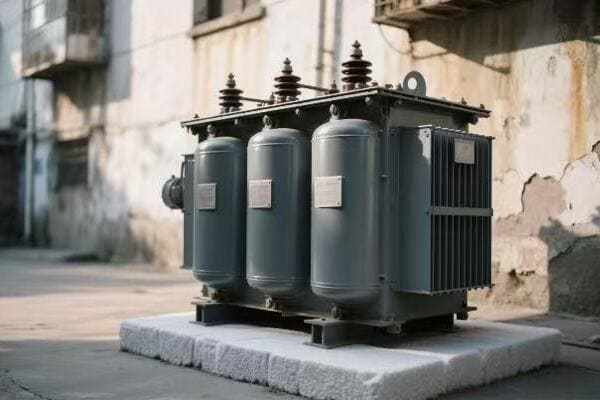
Let’s dive into the key aspects of maintaining long-term reliability:
Regular Maintenance: The Ounce of Prevention
Routine checks and maintenance can prevent major issues down the line.
Maintenance Tasks:
- Oil sampling and analysis
- Inspection of bushings and gaskets
- Cleaning of cooling fins
- Checking and tightening connections
Condition Monitoring: Listening to Your Transformer
Modern monitoring systems can detect issues before they become problems.
Monitoring Aspects:
- Temperature tracking (oil and winding)
- Partial discharge detection
- Dissolved gas analysis
- Load and voltage monitoring
Load Management: Balancing Act for Longevity
Proper load management ensures your transformer operates within its designed parameters.
Load Management Strategies:
- Regular load profile analysis
- Peak load shifting
- Power factor correction
- Cooling system optimization
Timely Upgrades: Staying Ahead of the Curve
Sometimes, upgrading components can extend the life of your entire transformer.
Upgrade Considerations:
- Replacing aging bushings
- Updating monitoring systems
- Retrofitting with more efficient cooling
- Enhancing protection devices
| Reliability Aspect | Impact on Transformer | Best Practices |
|---|---|---|
| Regular Maintenance | Prevents premature aging | Scheduled inspections, predictive maintenance |
| Condition Monitoring | Early fault detection | Real-time data analysis, trend tracking |
| Load Management | Optimizes performance | Smart grid integration, demand response |
| Timely Upgrades | Extends operational life | Technology assessment, cost-benefit analysis |
I once managed the maintenance program for a large network of 3 phase pad mounted transformers across a rapidly growing urban area. The challenge was to keep these transformers reliable while dealing with increasing power demands and aging infrastructure.
Our first step was to implement a comprehensive maintenance schedule. We moved beyond the traditional time-based approach to a condition-based maintenance strategy. This meant we were no longer just changing oil at fixed intervals but analyzing oil samples to determine when changes were actually needed. This approach not only saved costs but also allowed us to catch potential issues early.
One particular transformer stands out in my memory. Our routine oil analysis showed a slight increase in dissolved gases. While not critical, it was unusual for a relatively new unit. We decided to investigate further and discovered a minor manufacturing defect in one of the bushings. By catching this early, we were able to replace the bushing during a planned outage, avoiding a potential failure that could have left thousands without power.
Condition monitoring became our eyes and ears in the field. We installed smart sensors on critical transformers that continuously monitored various parameters. These sensors once alerted us to a gradual increase in operating temperature in a transformer serving a hospital. We were able to identify and fix a clogged cooling fin before it led to any service disruption.
Load management was a constant challenge, especially with the increasing adoption of electric vehicles in the area. We implemented a smart load balancing system that could dynamically adjust the load distribution across our transformer network. This not only prevented overloading but also improved overall efficiency.
I remember a particularly hot summer when our load management system really proved its worth. As air conditioning use spiked, the system automatically shifted loads to prevent any single transformer from being overloaded. This smart approach allowed us to meet the high demand without any outages or equipment damage.
Upgrades were a key part of our reliability strategy. We didn’t just wait for equipment to fail; we proactively identified opportunities for improvement. For instanceFor instance, we initiated a program to retrofit older transformers with advanced monitoring systems. This allowed us to bring these units into our smart grid network, improving their reliability and extending their useful life.
One of our most successful upgrades was the implementation of a new cooling system on a set of transformers located in a particularly hot urban area. The original cooling was struggling to keep up with increasing loads and ambient temperatures. By upgrading to a more efficient cooling system, we not only improved reliability but also increased the load capacity of these transformers by 15%.
However, maintaining long-term reliability isn’t just about technology; it’s also about people. We invested heavily in training our maintenance teams, ensuring they were up-to-date with the latest techniques and technologies. We also established a knowledge-sharing platform where technicians could share experiences and solutions, creating a culture of continuous improvement.
One challenge we faced was justifying the cost of these reliability measures to management. We developed a comprehensive cost-benefit analysis that showed how our proactive approach was actually saving money in the long run by reducing outages, extending equipment life, and improving energy efficiency. This data-driven approach helped secure ongoing support for our reliability initiatives.
Through these efforts, we managed to reduce our transformer failure rate by 60% over five years, while also extending the average lifespan of our units by 20%. This not only improved our service reliability but also significantly reduced our long-term capital expenditure needs.
The key lesson I learned from this experience is that ensuring long-term reliability is an ongoing process that requires a holistic approach. It’s not just about fixing problems as they arise, but about creating a system that anticipates and prevents issues before they become critical. By combining regular maintenance, advanced monitoring, smart load management, and strategic upgrades, we can significantly extend the life and improve the performance of our 3 phase pad mounted transformers.
The Heart of Power Distribution: Understanding 3 Phase Pad Mounted Transformers for Non-Experts?
Ever walked past one of those green boxes in your neighborhood and wondered what’s inside? These mysterious containers are more important than you might think.
3 phase pad mounted transformers are crucial components in power distribution systems. They convert high voltage electricity from power lines to lower voltages suitable for homes and businesses. Understanding their function helps appreciate the complexity of our power infrastructure.

Let’s break down the key aspects of these transformers for non-experts:
Basic Function: Voltage Conversion
At its core, a transformer changes voltage levels.
How It Works:
- Steps down high voltage to usable levels
- Maintains three separate phases of power
- Uses electromagnetic induction principle
Components: The Inner Workings
Understanding the parts helps grasp the whole.
Key Components:
- Core (usually made of silicon steel)
- Primary and secondary windings
- Insulating oil or dry-type insulation
- Bushings for electrical connections
Safety Features: Protecting People and Property
Transformers have multiple safety systems built-in.
Safety Elements:
- Protective enclosure
- Automatic shut-off mechanisms
- Cooling systems to prevent overheating
- Grounding systems for electrical safety
Environmental Considerations: Green Boxes, Green Thinking
Modern transformers are designed with the environment in mind.
Eco-Friendly Aspects:
- Oil containment systems
- Noise reduction features
- Energy-efficient designs
- Use of biodegradable oils in some models
| Aspect | Importance | Non-Expert Explanation |
|---|---|---|
| Voltage Conversion | Critical | Like changing water pressure for home use |
| Components | High | The ‘organs’ that make the transformer work |
| Safety Features | Essential | Protection systems, like airbags in a car |
| Environmental Design | Growing | Making sure the transformer is a good neighbor |
As someone who’s worked with these transformers for years, I’ve often found myself explaining their importance to curious neighbors or concerned citizens. One particular instance stands out.
I was overseeing the installation of a new transformer in a residential area when a group of neighbors approached, worried about safety and noise. Instead of dismissing their concerns, I saw an opportunity to educate.
I started by explaining the basic function, comparing it to a water pressure system. Just as we need to reduce water pressure from main lines to use in our homes, we need to reduce electrical voltage from transmission lines for safe home use. This analogy helped them understand the transformer’s crucial role.
Next, I addressed their safety concerns. I showed them the various safety features, explaining how the protective enclosure is designed to contain any issues and how the automatic shut-off mechanisms work like circuit breakers in their homes. I even demonstrated the noise levels, which were surprisingly low thanks to modern insulation techniques.
One resident was particularly interested in the environmental aspects. I explained how modern transformers use biodegradable oils and have containment systems to prevent any leaks. I also pointed out how the energy-efficient design actually helps reduce overall power consumption in the grid.
The most impactful moment came when I opened a decommissioned transformer (with all safety precautions in place) to show them the internal components. Seeing the complex arrangement of cores and windings gave them a new appreciation for the technology they relied on every day.
This experience taught me the importance of transparency and education in our work. By helping non-experts understand these crucial components of our power system, we not only alleviate concerns but also foster a sense of community involvement in our infrastructure.
I’ve found that when people understand the role and function of pad mounted transformers, they’re more likely to report unusual noises or appearances, potentially helping us catch issues early. This kind of community engagement is invaluable for maintaining a safe and reliable power distribution system.
In the end, these "green boxes" are more than just utility equipment; they’re a vital link between the vast power generation system and our daily lives. By demystifying their function and importance, we can build better relationships with the communities we serve and ensure a more informed and engaged public.
Conclusion
Proper installation and maintenance of 3 phase pad mounted transformers are crucial for reliable power distribution. By following best practices in site selection, safety protocols, installation procedures, and long-term maintenance, utility companies can ensure efficient and safe operation of these vital components in our power infrastructure.
Free CHBEB Transformer Catalog Download
Get the full range of CHBEB transformers in one catalog.
Includes oil-immersed, dry-type, pad-mounted, and custom solutions.
Quick Message
Request A free quote
We'd like to work with you
- +86 15558785111
- [email protected]
- +86 15558785111
What We Do
CHINA BEI ER BIAN (CHBEB) GROUP, with 218 million in registered capital, originated from Beijing Beierbian Transformer Group. Headquartered in Beijing for R&D, it operates major production bases in Nanjing and Yueqing, producing high-quality products.
Latest Product
address
BeiJing
No 3,RongJing East Road,BeiJing Economic Technological Development Area,BeiJing,China
JiangSu
No 7️Xiangfeng Road,Jiangning,NanJing,JiangSu,China
WenZhou
No.211, Wei 16 Road, Industrial Zone, Yueqing, Wenzhou, Zhejiang, China.
XiangYang Industrial Zone ,YueQing,WenZhou,ZheJiang,China
contact us
- [email protected]
- +86 13057780111
- +86 13057780111
- +86 15558785111
Copyright © Bei Er Bian Group


